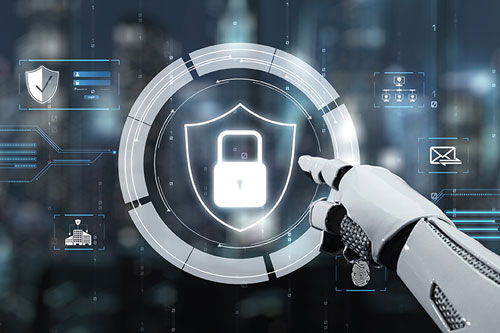While cybercriminals are evolving faster than ever, far too many telecom providers still rely on fragmented defenses. Without an end-to-end approach to cybersecurity, even large-scale providers may be exposing critical infrastructure and sensitive customer data to rising AI-driven threats.
That was the guidance given from Ganesh Devarajan, Accenture’s global communications, media & technology industry group security lead, in a conversation with Fortinet at Mobile World Congress 2025 in Barcelona.
“The frequency and impact of cyberattacks are both increasing,” Devarajan told Fortinet’s Ronen Shpirer, director of telco solutions marketing. “It only takes one weak link for a system to be compromised—and with generative AI, that’s now easier than ever.”
AI Changes the Threat Equation
As AI accelerates both attack techniques and threat velocity, the challenge for telecom operators becomes even more urgent. Tools like WormGPT, which can repackage known malware strains to bypass antivirus and endpoint defenses, are putting advanced capabilities in the hands of relatively unsophisticated attackers.
“Just like good technologies can empower defenders, they also empower attackers,” Devarajan said. “And the scale of potential damage is growing.”
The consequences for service providers aren’t theoretical. A successful breach could expose a trove of personal and location-based customer data, or even disrupt core communications infrastructure. Meanwhile, smaller businesses relying on telcos for connectivity may be left without the resources or expertise to defend themselves.
End-to-End Security Is the Path Forward
Many telcos and service providers still take a piecemeal approach to cybersecurity by deploying isolated point products from multiple vendors. But this fragmented model creates blind spots and complicates incident response. Attackers exploit that complexity to move laterally and gain persistence.
“That’s why end-to-end visibility is critical,” Devarajan emphasized. “If no one’s looking at the full picture, it makes the attacker’s job much easier.”
Fortinet solves this problem with a unique unified platform approach. Powered by the Fortinet Security Fabric, Fortinet delivers consistent protection, shared threat intelligence, and seamless interoperability across network edges and clouds. Whether deployed by a global Tier 1 operator or delivered as a managed service to SMB customers, the Fortinet platform scales to meet the needs of any environment, without the sprawl of disconnected tools.
Telcos can leverage this architecture to not only secure their own infrastructure—including telecom-specific layers like SS7 and RAN—but also extend security services to their SMB customers. This addresses a widening gap in the cybersecurity landscape: many smaller organizations are high-risk but under-protected, and service providers are in a unique position to help close that gap.
The Role of Telcos in a Shifting Landscape
Too often, cybersecurity is still treated as a back-office IT concern, disconnected from the operational realities of service providers.
“Many telecom providers still operate traditional IT SOCs,” Devarajan said. “But what about telecom-specific infrastructure like RAN protocols or signaling? That’s not being monitored at the level it should be.”
With adversaries increasingly targeting telecommunications networks for both disruption and data theft, that must change. Telcos and service providers are becoming both a target and a frontline defense for their customers, and their security model must reflect that role.
Unified Security, Shared Responsibility
The cybersecurity challenges facing telcos and service providers are growing more complex, but so are the tools available to meet them. AI is amplifying threats, making traditional, fragmented defenses no longer sufficient. A unified, end-to-end security strategy—built on real-time visibility, integration across domains, and telecom-specific intelligence—is essential. Fortinet and Accenture are aligned in this message: service providers not only need to protect their own infrastructure, but also play a vital role in extending security to the customers and SMBs who depend on them. The future of secure connectivity depends on closing the gap before attackers widen it further.
Devarajan and Shpirer’s full conversation is available on the Fortinet On-Air podcast.

